How To Have a Traditional German Breakfast | Frühstück
This is the ultimate guide on how you can easily make a traditional German breakfast or Frühstück right in your home!
Even though I have lived in the US for over 25 years, I love cultivating my German culture and hanging on to old traditions. One of them is celebrating our Sunday morning breakfast, German style (Sonntagsfrühstück)!
In this blog post, I am sharing essential elements, authentic recipes, and cultural insights. You can then create a breakfast experience that’ll satisfy both your taste buds and your soul. You will see that the most important meal of the day for Germans can include some very simple ingredients!
About German Breakfast
You might know that I grew up in Germany and lived there until my late 20s. When looking at some other articles on so-called German breakfasts, I noticed that they were highly inaccurate. Nobody I know eats “eggs in mustard sauce” for breakfast – that is a lunch or dinner food. It is my intention to only bring you those breakfast foods that people in Germany actually have for the first meal of the day!
“Frühstück” is a very important meal. Germans say that you should eat breakfast like a king, lunch like a nobleman, and dinner like a pauper.
This post contains affiliate links, which means I make a small commission at no extra cost to you. You can read my full disclosure.
How to set the German breakfast table
I love traditions! Therefore, I cherish my grandparents’ tablecloths I inherited and love to break them out for our Sunday Frühstück.
Next, I love to also use our heirloom china. I don’t mind hand-washing it afterward because it makes me slow down and in a way reconnect with my grandparents.
Every set consists of a breakfast plate, coffee cup, and saucer. For our eggs, I always have matching egg cups. For the eggs, we use melamine tea spoons since eggs can taste funny from stainless steel or silver spoons. We might even set out some flax linen napkins. And we love lighting some candles!
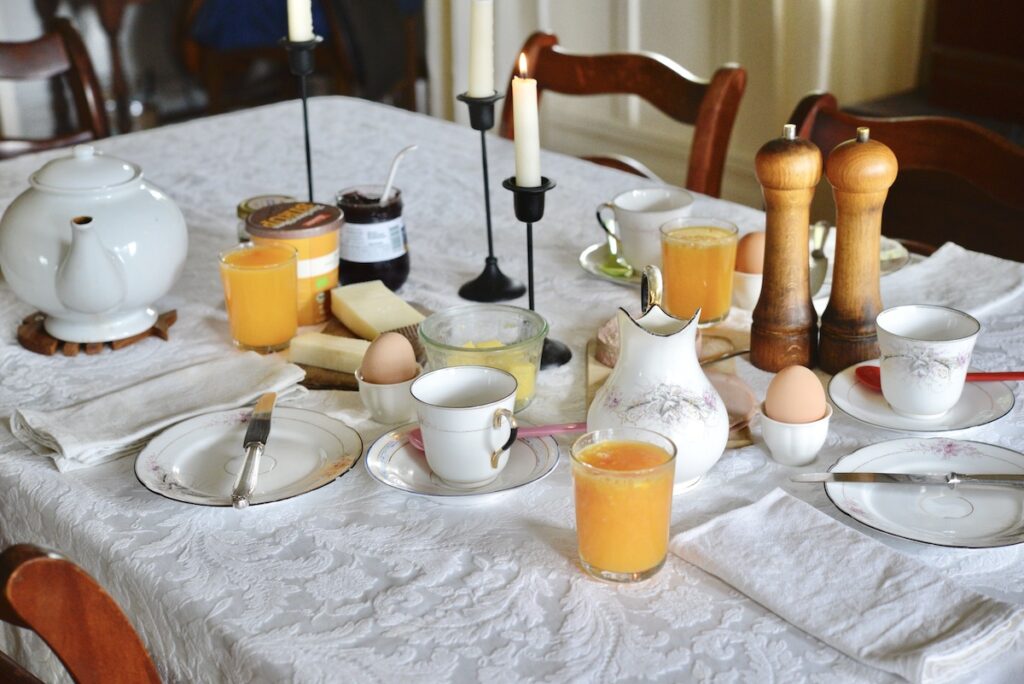
Elements of a Typical German Breakfast
German breakfast essentially is a continental breakfast – but not the way most Americans think about it.
If you’d like to know where you can find traditional German foods, be sure to download my FREE PDF with a list of online vendors and brick-and-mortar stores.
Bread and rolls (The bread basket)
These are really one of the most traditional German breakfast foods. The joke is that Germans eat bread with their bread. We have a wicker bread basket that we line with a cloth napkin. We then always have a selection of darker, whole-grain sourdough bread, German rolls, white bread, and pretzels.
If you go to a German bakery you will find many different types and styles of crusty rolls. There are sesame rolls, poppy seed rolls (Mohnbrötchen, sourdough rolls, spelt rolls (Dinkelbrötchen), whole wheat rolls (Vollkornbrötchen, Kaiser rolls (Kaisersemmeln), milk rolls (Milchbrötchen), rolls with raisins (Rosinenbrötchen), sticky German cinnamon buns (Zimtschnecken) and so many more!
Since Germany neighbors France, you can often find croissants in those bread baskets, as well.
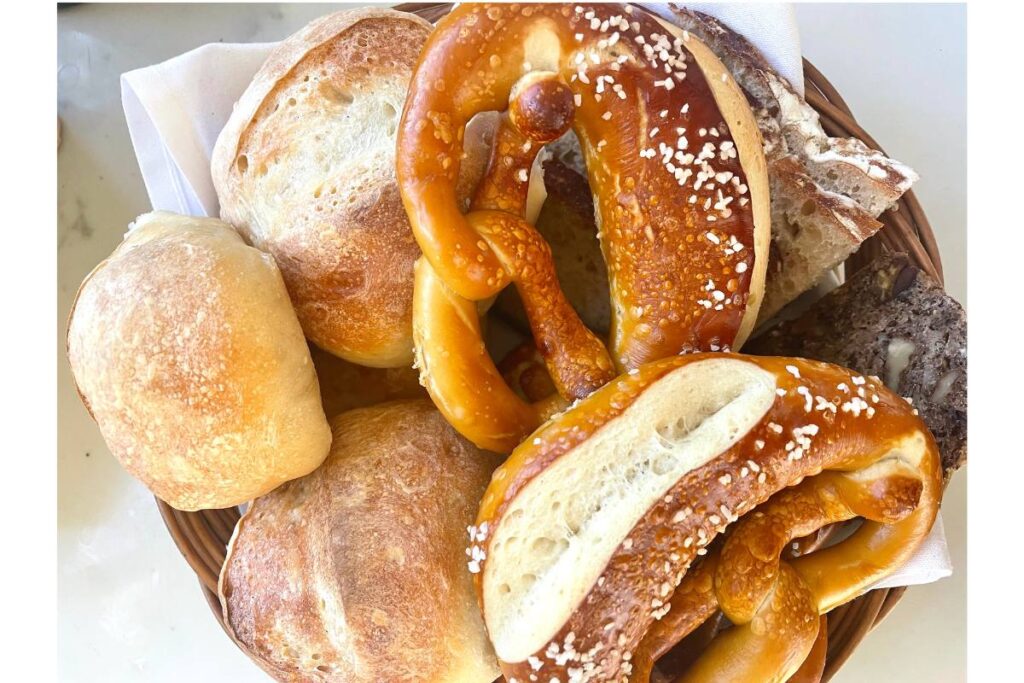
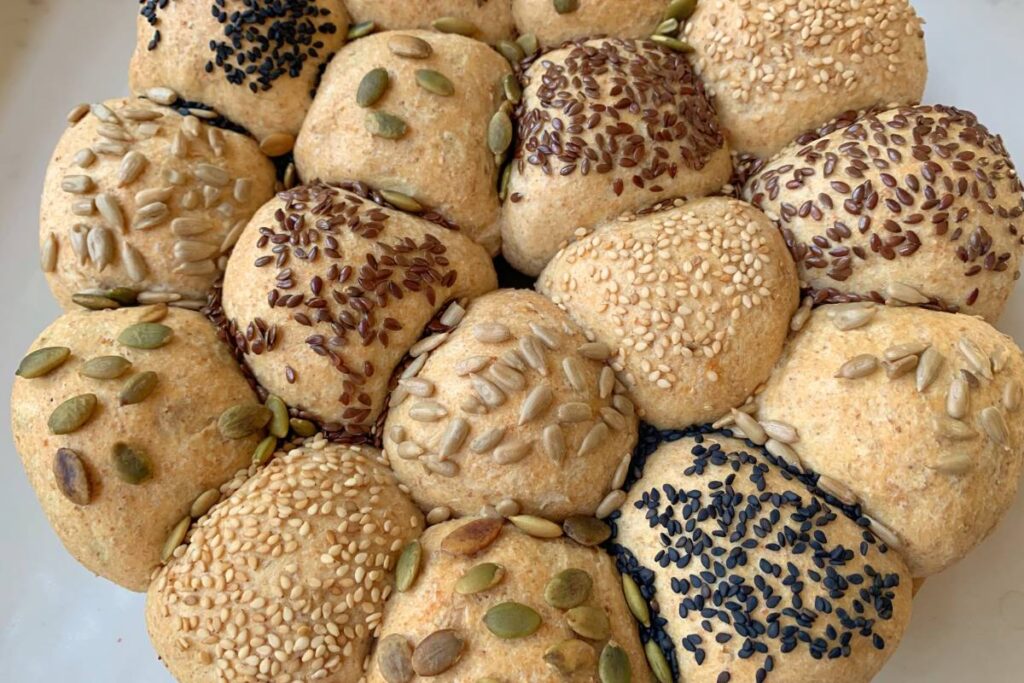
Eggs
A good German breakfast wouldn’t be complete without eggs. However, traditionally Germans boil their eggs. We love to boil them just about where the egg yolk is firm on the outside but soft and runny on the inside. (Pro tip: for large eggs coming just out of the refrigerator, you will want to boil them for 7 ½ mins).
They are perfect with a small sprinkle of salt. Oftentimes, it’s just easiest to make hard-boiled eggs, though. More recently, people have also been embracing omelets and scrambled eggs.

Cheese
I am a big cheese lover! Cheese is one of those traditional German breakfast foods that you will always find. Whether it is slices of hard cheeses or a selection of soft cheeses, they are definitely essential.
Germans make delicious cheeses but one of my favorites is a Gruyère or Geyerzer (you can find excellent Gruyère here). Traditional cheeses can also include Gouda, Emmentaler, Bergkäse (cheese from the Alps), brie, and Cambozola.
Soft cheeses like quark often appear on German breakfast tables as well as soft cheese spreads with herbs or tomatoes.
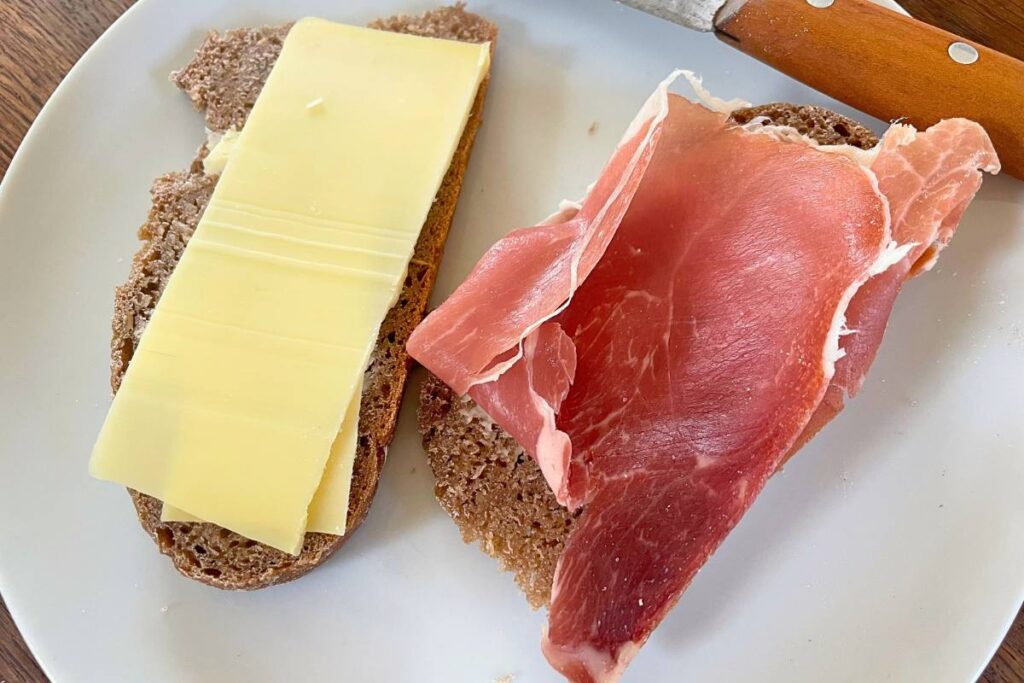
Cold cuts
Germans definitely love their meats and a classic German breakfast includes some cold meats. That can mean different things: liverwurst, salami, prosciutto, Black Forest ham, mortadella, and so on. If you have ever visited the meat counter in a German grocery store, you might have seen the dizzyingly large selection of cold cuts.
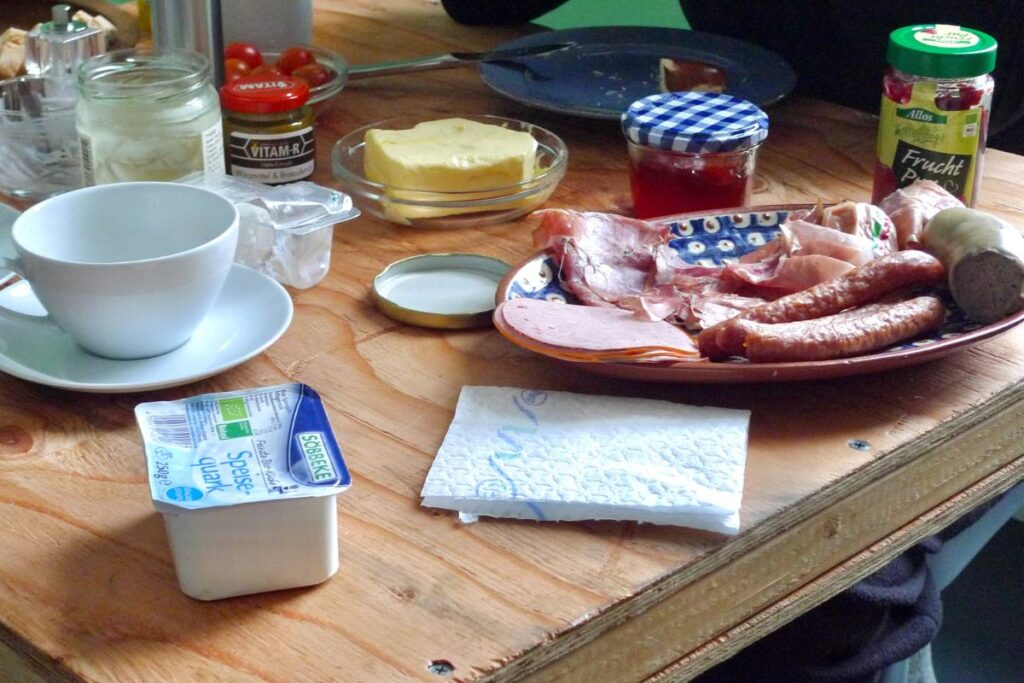
Fish and seafood
Especially in Northern Germany, you can often find some type of fish or seafood on a breakfast table. That can be marinated herring, Rollmops (pickled herring), or shrimp salad (Krabbensalat). More recently, people often like to serve smoked trout or smoked salmon. It is especially good on a white roll with horseradish or a creamy mustard sauce.
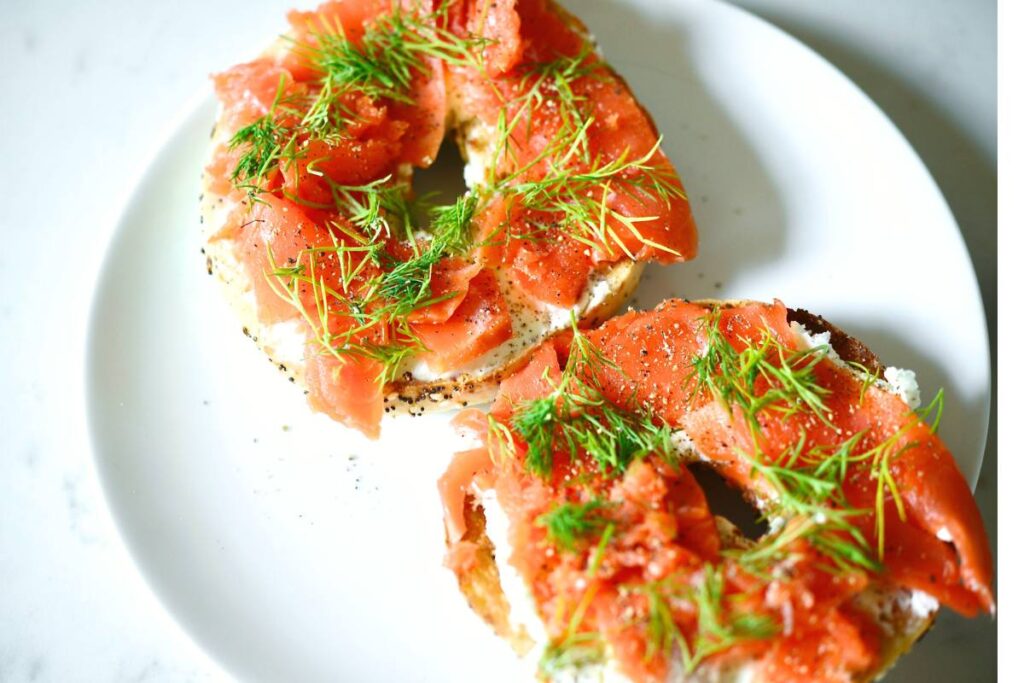
Jams and sweets
Germans love making and eating jam to satisfy their sweet tooth. They are definitely a very popular German breakfast food! There are so many typical German varieties such as sour cherry jam, blackcurrant jam, rosehip jam, or elderberry jam.
People love making and gifting homemade jams. Common additions include sugar beet syrup (Zuckerrübensirup). These days, people also love to have fresh fruits. Strawberries and kiwis are always a popular choice.
Even sweeter is honey and I always love to put some German forest honey (Waldhonig) on our breakfast table.
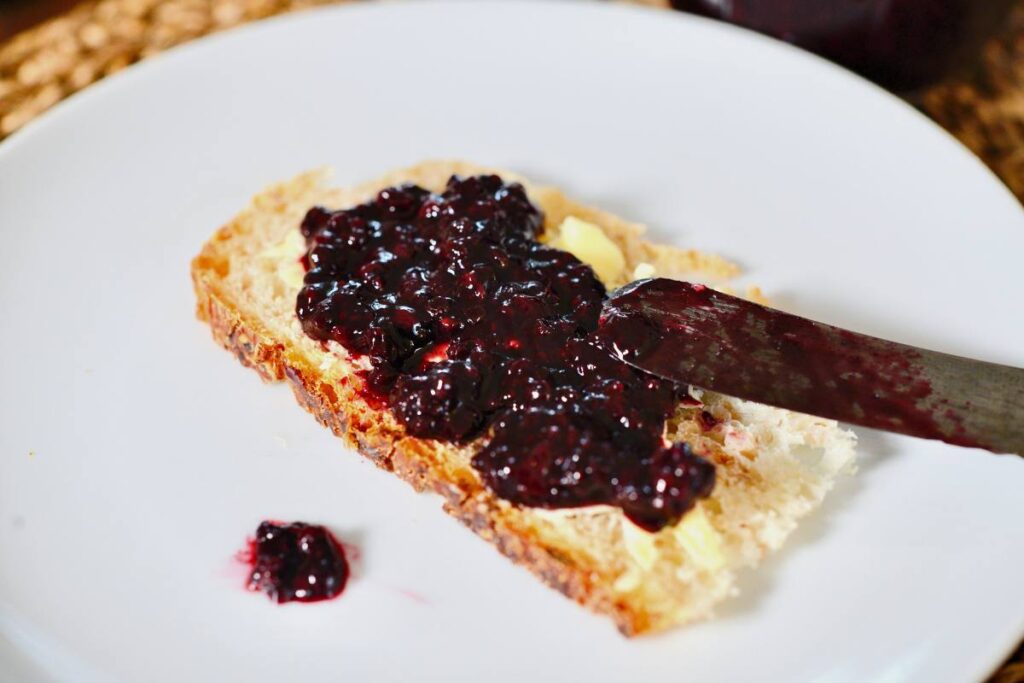
Fresh Fruit
I think a glass of fresh-pressed orange juice counts here. Other than that, Germans often either serve a fruit platter with strawberries, raspberries, red currants, black currants, mangoes, grapes, and kiwis. Sometimes, you find a fruit compote (Früchtekompott).
Coffee and tea
Germans love their coffee. In 2022, the average German drank a little more than 44 gallons (read that statistic here). I love my cup of coffee with a good helping cow’s milk.
But many people also like to have black tea. Northern Germany in particular is very fond of strong black teas – maybe it’s because of how close they are to England?
For kids, Germans like to serve hot cocoa or herbal teas.
Fun fact:
There is a joke that you know you’re German if for breakfast you pull everything out of your cupboards and cover every square inch with something on your breakfast table.
Some other popular German breakfast ideas:
What you see above is what we typically have for breakfast. During the week, I like to keep it very simple but on Sundays, we definitely make our breakfast much more elaborate.
Depending on your preference, you can serve other foods as well:
- German waffles: Most people in Germany serve these in the afternoon but you can easily make waffles for breakfast, too.
- German apple pancakes: The same is true for pancakes but why not serve them in the morning?
- Homemade Bircher muesli: Even though this type of Müsli has its origins in Switzerland, many Germans like to have cold cereal in the morning. I would say this is more of a weekday food but in hotels, you often find small jars of Bircher muesli and yogurt.
- White sausage: Having a white sausage for breakfast is something you will find in and around Munich (Bavaria). The reason they would serve sausage before noon is because they made them fresh in the early morning and they would spoil by the afternoon. In traditional Bavarian style, you will enjoy your sausage with a pretzel and some wheat beer.
- Egg omelet: I feel that omelets are something that Germans copied from England and America but there are lots of good reasons to include it on your German breakfast table.
- Fried potatoes: Often called Bauernfrühstück, this is essentially golden brown, crispy fried potatoes. Sometimes, people add eggs, caramelized onions, or breakfast sausage to that.
- Granola: While this is certainly a newer addition to breakfast tables, people love adding a bit of healthy crunch to their morning. You can easily make your own granola at home!
Some German products you May Like:
List of sources for German foods and products
Watch my German breakfast Youtube video:
Pin It For Later:
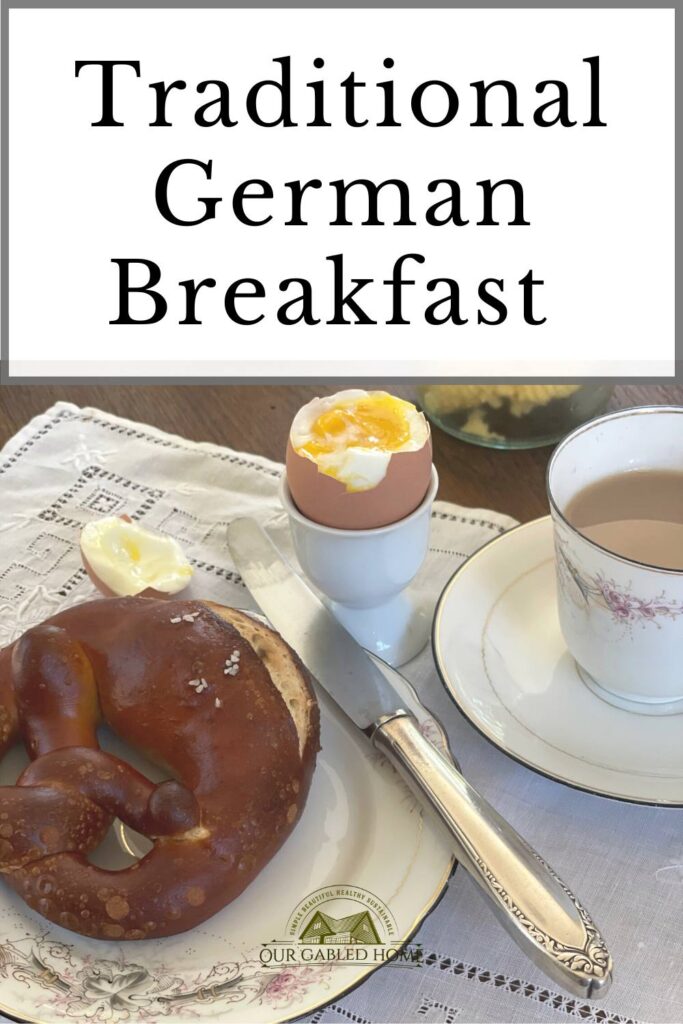
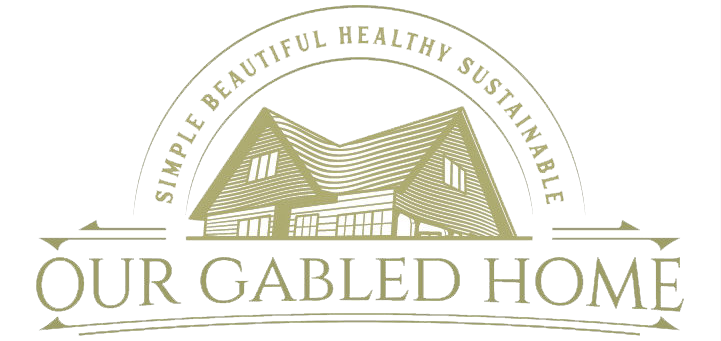

Hallo Anja,
dein Artikel ist sehr gut geschrieben. Eine Ungenauigkeit fiel mir auf. Laugengebäcke wie Bretzel nur in den Alpenregionen üblich. Das wären in Deutschland nur das südliche Bayern und Baden-Württemberg. Wenn ich hier in Mittel- und Norddeutschland zum Bäcker gehe, gibt es relativ wenig Laugengebäck zum Verkauf. Weil es sich für den Bäcker finanziell nicht lohnt. Auch bei Einladungen zum Frühstück gibt nie Laugengebäck. Ich vermute, du bist aus Bayern und Dir ist es gar so bewußt.
Postskript: Kurioserweise wirkt es aus der Ferne so, als wenn Bretzel in den USA üblicher sind, als in vielen Teilen von Deutschland und US-Amerikaner es als typisch deutsch ansehen. Es ist aber typisch bayerisch und nicht Deutsch. Genau wie Spätzle typisch schwäbisch sind.
Es gibt natürlich Speisen, die in einer Region entwickelt wurden und sich über viele deutsche Gebiete verbreitet haben. Bockwürste kommen ursprünglich nur aus Franken. Klöße aus Thüringen. Gulasch aus Ungarn über Österreich nach Deutschland. Und das Schnitzel kommt aus Wien. Aber bei Bretzel und Spätzle hat diese Verbreitung nicht in diesem Ausmaß stattgefunden.
Hello Anja,
Your article is very well written. I noticed one inaccuracy. Lye rolls like pretzels are only common in the Alpine regions. In Germany, that would only be southern Bavaria and Baden-Württemberg. When I go to the bakery here in central and northern Germany, there are relatively few pretzels for sale. Because it’s not financially worthwhile for the baker. Even at breakfast invitations, there are never any pretzels. I assume you’re from Bavaria and you are aware of this.
Postscript: Curiously, from a distance it seems like pretzels are more common in the US than in many parts of Germany and US Americans consider it typically German. But it is typically Bavarian and not German. Just like Spätzle is typically Swabian.
There are, of course, dishes that were developed in one region and have spread across many German regions. Bockwürste originally only come from Franconia. Dumplings from Thuringia. Goulash from Hungary via Austria to Germany. And schnitzel comes from Vienna. But pretzels and spaetzle did not spread to the same extent.
Thank you for sharing. I was born in Stuttgart and grew up on Laugenbrezeln mit Butter ~ Anja
Hello
What cheese on the pic above with rye bread and prosciutto ham?
That is Gruyere ~ Anja